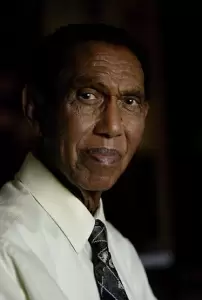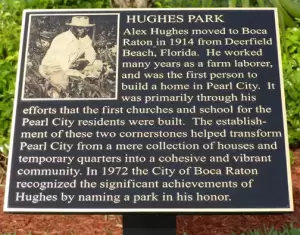African American Schools

The first high school for African Americans in Palm Beach County was built in 1917 on 11th Street, in the Northwest neighborhood. Although its student body was intended to include children from Pleasant City a mile away, at least one private school opened for students unwilling to travel to 11th Street. Today the main Industrial High School building is occupied by U. B. Kinsey/Palmview Elementary School of the Arts and is part of the Florida Black Heritage Trail. The rest of Industrial’s buildings were demolished, except for the chapel.
In 1918 two early wood-frame schools were phased out. The one-room Colored School No. 8 on 22nd Street was sold to H. H. Gray for $125, and the two-story West Palm Beach Colored School (Lake Academy) to Russell Hopkins for $2,000. But there was no shortage of students; in 1919 attendance was reportedly as high as 50 to 60 children in some black classrooms. In 1923 Pleasant City residents presented a petition to the school board for a new school, and had a patron. The Toilers of Mt. Parnassus Lodge No. 6233 (Odd Fellows) offered their two-story stucco building on Lucky Street (now 21st St), which had been designed in 1914 by Hazel Augustus, the first black architect in Palm Beach County.
Although the county approved the request and assigned Mrs. A. L. Duncan and Mamie Holmes as teachers, residents complained the building was not well maintained. In addition, the Lodge was behind on mortgage payments to the Hammon Estate. In 1926 the school board took over the payments and title to Odd Fellows Hall, located almost back-to-back with the original one-room schoolhouse. It is now the Pleasant City Community Multicultural Center within Pleasant City Park, and part of the Florida Black Heritage Trail.
In Delray (which became Delray Beach in 1928), another black resident took action to promote education of local black children. In 1914 William Robinson wrote to Dr. Booker T. Washington, president of Tuskegee Institute, asking for advice on reopening Colored School No. 4, which had been closed since 1907. Washington wrote to Clarence Walker, teaching at an Alabama college, and recommended he help the people of Delray. Although Walker arrived to find a rundown schoolhouse surrounded by scrub palmetto, he turned it into the first county training school in Florida under the Smith Hughes National Vocational Education Act of 1917, designed to encourage agricultural training. From 1917 to 1921, Walker developed the Delray County Training School with a broad curriculum.
Again on the recommendation of Dr. Booker T. Washington, Solomon David Spady, a former student of Dr. George Washington Carver at Tuskegee Institute, replaced Walker in 1921 as teacher and principal of Delray County Training School. By 1934, the school expanded to grades 1-10. When George Washington Carver High School was built on the same site in 1937 for grades 1-12, Spady was its principal.

In nearby Boca Raton, education came to the black neighborhood of Pearl City through the efforts of Alex Hughes, its first resident. In 1923 Hughes petitioned the Board of Public Instruction, as the county school board was then called, for a school. He later recalled: “They told me that if I could find eight children, they would provide a teacher. I came right on back and mustered up; eight children, and they sent a teacher down, Miss Robinson.” The city named Hughes Park at 200 NE 14th Street to honor Alex Hughes.
For a building, the county offered the former schoolhouse for white children on Palmetto Park Road, just west of the Florida East Coast Railway tracks, presently the site of Boca Raton Elementary School. Farmer Frank Chesebro, Alex Hughes’ employer, took 18 days to roll the small wood building to 11th Street and Dixie Highway, where it reopened as the Boca Raton Negro School. The structure remains there today, although a larger building was added in the late 1930s, at North Dixie Highway and present Glades Road.

